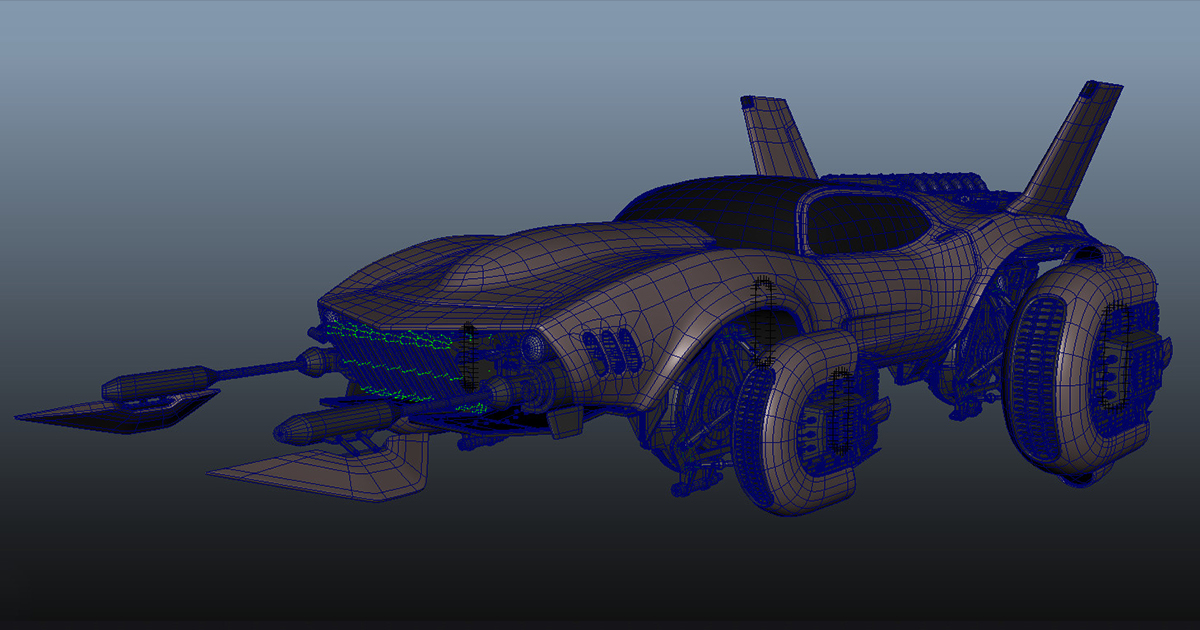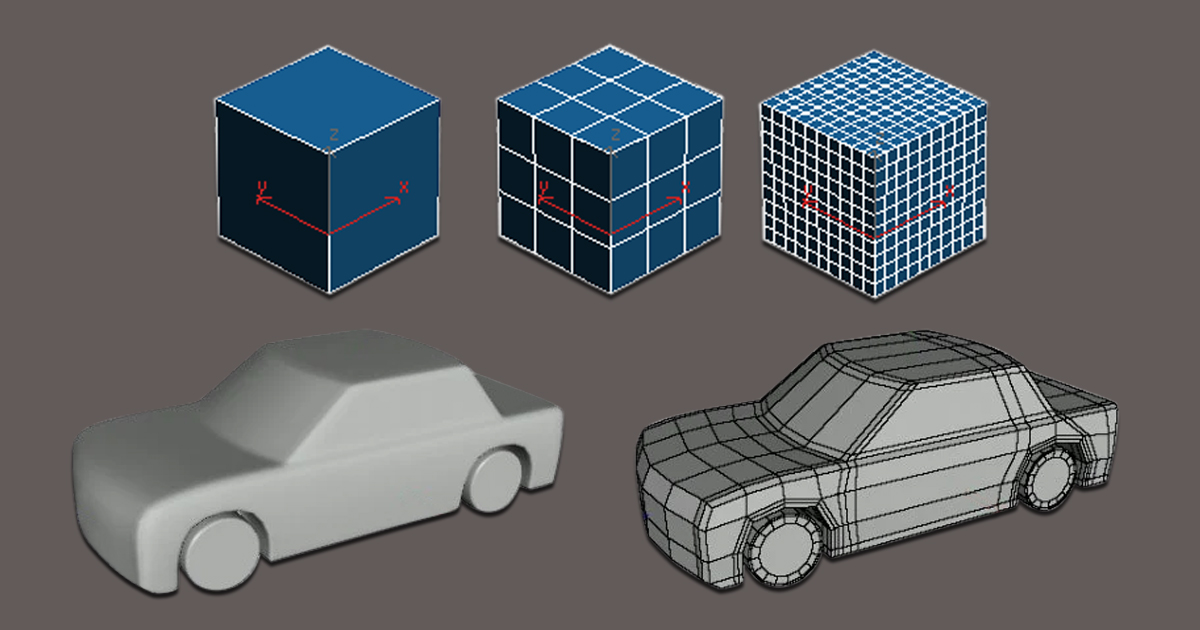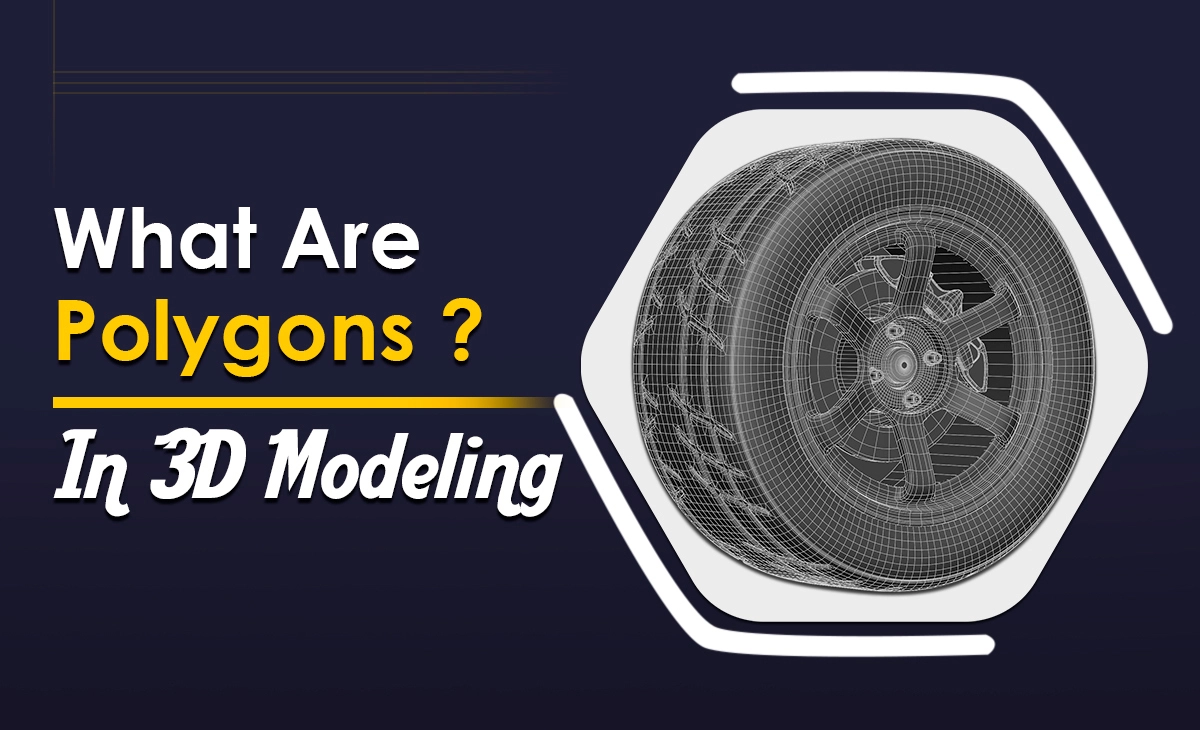Overview of polygons modeling
Polygon is nothing but the foundation of 3D models. When animators or modelers want to make 3D models they have to work in-depth on models and whether they need high poly or low poly. When a 3D model studio works on a 3D model, it must determine what polygonal are needed. Polygons are commonly used to create surfaces and define the geometry of various 3D modeling terms.
What Are Polygons in 3D Modeling?
Polygon is a two-dimensional geometric shape that is the basis of 3D modeling. At least 3 vertices form a polygon, and an edge is used to create a surface or shape. Polygons have at least 3 sides and can have different types of vertices. A triangle shape is the most preferred polygon for 3D modeling. Polygon is an essential part of 3D modeling services. Without using polygons we can not make 3D modeling or design.
The Fundamentals of Polygons in 3D Modeling Technique
Face, Edges, and Vertices are the fundamentals of the polygons in 3D modeling. Using these units can make polygons. Before going into details we have to know about these fundamental objects.
Face: Faces are the surface of the page. You can make a surface 3d model by using single or multiple units.
Edges: When 2 segment or faces is connected is called an edge. Wherever the faces meet it creates edge. It creates one dimension.
Vertices: These are the corner points of a polygon. Vertices are created when edges are connected with a point. It defines three-dimensional space.
Polygons in 3D Modeling: A Guide
Polygons for Modeling
Triangles: Triangles is a basic polygon model for 3d modeling. It consists of three verticals and edges.
Quadrilaterals (Quads): when we use the 4 sides of the line is called Quadrilaterals. It is used in modeling but it is converted into a triangle for rendering purposes.
N gons: when it is used more than 4 polygons is called N gons. But most of the time it is avoided or transformed into triangles or quadrilaterals for rendering purposes.
Retopology for 3D modeling
Retopology is a crucial step in 3D polygon modeling that involves altering a high-poly model into a low-poly version. Various methods and software-specific tools simplify this process, making it an essential component of many artists’ workflows.
Artists simplify the topology during retopology while keeping intricate details by baking the high-poly version onto the object’s surface textures. This strategic approach minimizes loss of detail while significantly optimizing the model’s performance. The result is a more efficient and resource-friendly model that still retains the visual intricacies of the original high-poly design.
Rendering for 3D modeling
The process of creating the final 2D image or animation from the 3D model. The rendering process involves complex calculations and algorithms, and modern graphics engines and GPUs play a significant role in accelerating these computations to achieve real-time rendering for applications like video games and simulations

High poly and low poly in 3D modeling
High & Low Polygons in 3D Modeling Techniques
High-poly models are characterized by a dense polygon count, delivering quality and intricate detailing. Primarily employed for creating photorealistic 3D renders and lifestyle imagery, high-poly models find applications in print media advertising, banners, billboards, and various other advertising platforms.
Low-poly models are ideal for interactive images, AR/VR modeling, 360-degree views, games, and 3D product configurators. Featuring a reduced polygon count, these models enable swift rendering. While maintaining a realistic appearance, low-poly objects ensure smooth functionality within engines and applications, making them well-suited for dynamic and interactive digital experiences
Advantages and Disadvantages of Polygons Modeling
Polygon modeling is user-friendly and easy to modify for beginners and everyone.
Advantages of polygon modeling
Versatility: In polygon modeling artists can make 3D models from simple shapes to complex geometric shapes.
Detail control: Artists can focus on the details of the model by using faces, edges, and vertices.
Animation-friendly: Artists can deform models at any time by using polygons to look more attractive and detailed.
Realism: Using polygon can make photorealistic 3D models suitable for applications like product visualization, architectural rendering, and film production.
Explore new designs: Artists can develop impressive designs and new shapes. This is why polygonal models are famous in the animated film industry.
Disadvantages of polygon modeling
While working with polygons for modeling you have to face some problems. Let’s discuss these in detail.
Geometric Errors:
Geometric errors in polygonal modeling can lead to visual effects, rendering issues, and challenges during animation. Understanding and minimizing these errors is crucial for creating high-quality 3D models. Some of the geometric issues are Non-Manifold Geometry, overlapping faces, etc.
Require Specific Resolution:
Every shape like a triangle, object, or count there have guidelines. If anyone breaks this then they have to face the consequences. To maintain quality when importing 3D polygonal objects, it is recommended to use textures with a maximum size of 1024 pixels by 1024 pixels. Surpassing this limit may result in reduced resolution, causing the models to lose detailing.
Time-consuming:
A major disadvantage of polygon modeling is that it takes a long time to create a detailed design.
Resolution problem:
Polygon 3D models can not hold up in all resolutions.

Different polygon modeling techniques
What Are the Different Polygon Modeling Techniques for 3D Models?
There are three different techniques in polygon 3D modeling based on the project.
They are Bevels, subdivisions, and Extrusion.
Bevel
Beveling is a 3D modeling technique commonly used to round or chamfer the edges of polygons or 3D objects. This process involves creating a small, flat surface at the edge of a model, softening sharp edges, and giving a more realistic appearance to the object. It’s widely employed in both hard-surface and organic modeling to add details and improve the overall aesthetics of a 3D model.
Subdivision
3D artists make cage models or geometrical shapes before creating an actual 3D model. They make spheres, cubes, cylinders, triangles, etc. These shapes are in low resolution. When you subdivide those shapes into pieces then the resolution is getting high. There are two types of subdivisions. They are uniform and selective.
Extrusion
Extrusion is a fundamental technique in polygons in 3D modeling. It involves extending a face, edge, or vertex along its normal direction, creating new geometry, and adding depth to the model. Extrusion effectively is essential for creating detailed and realistic 3D models, whether for architectural visualization, character design, or any other 3D modeling application.
Conclusion
Polygons play a fundamental role in 3d graphics. As technology is advanced the role of polygons has evolved to contribute to 3D modeling.
